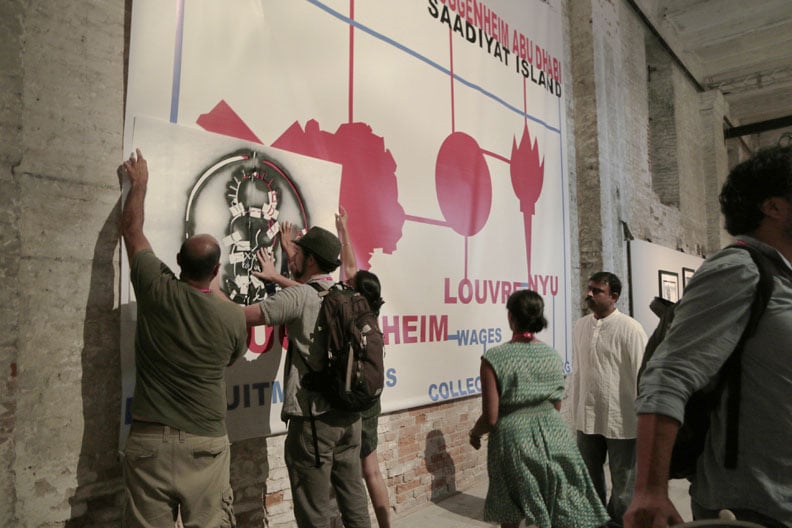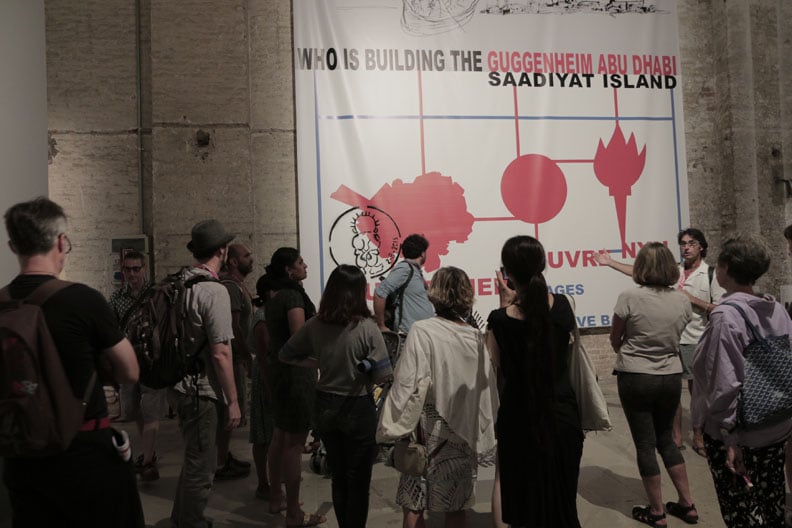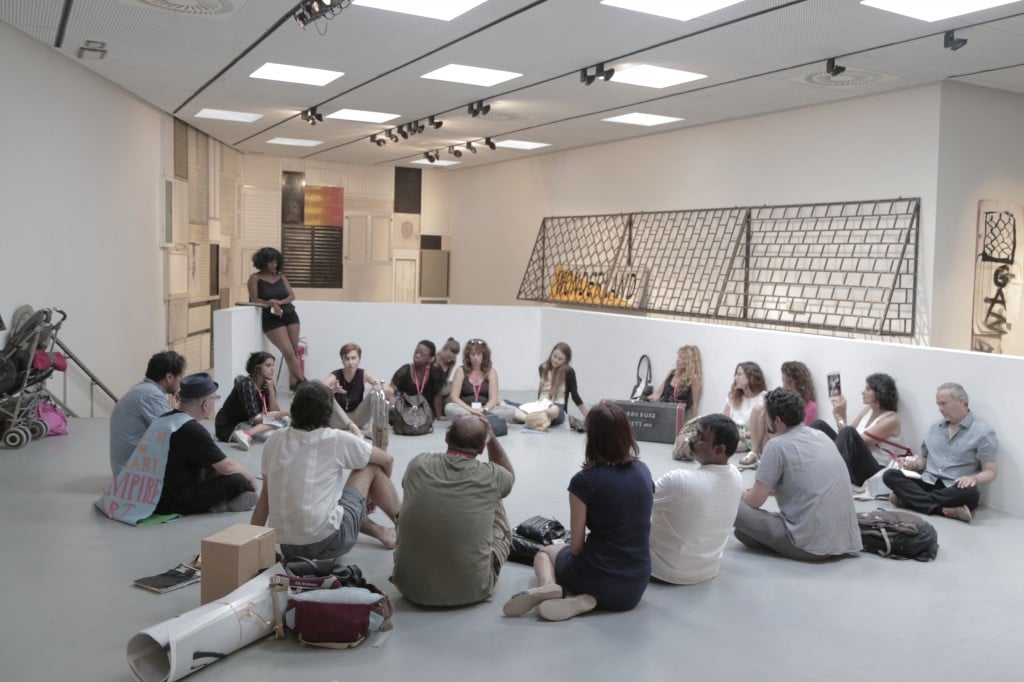Art & Exhibitions
Gulf Labor Occupies the Israeli Pavilion in Pro-Palestine Action
Palestinians and Abu Dhabi's workers face similar injustices.

Palestinians and Abu Dhabi's workers face similar injustices.

Sarah Cascone

The Gulf Labor Coalition may be an official participant in this year’s Venice Biennale, but that doesn’t mean that the art and activism coalition has abandoned its preferred form of guerrilla protest actions, occupying the Israeli pavilion this week in an effort to draw attention to poor working conditions faced by Palestinians in the West Bank.
The group’s actions began the morning of August 2, with an intervention on the official Gulf banner that hangs in the Arsenale. Members of G.U.L.F. (Global Ultra Luxury Faction) added a “Handala” stencil to the banner, a symbol of the Palestinian Resistance created by Palestinian cartoonist Naji Salim al-Ali, who was assassinated in 1987, before holding an hour-long protest at the Israeli pavilion.

G.U.L.F and Gulf Labor add a Handala stencil to their banner at the Venice Biennale.
Photo: Gulf Labor.
According to a statement on the Gulf Labor website, they are using the symbol, which depicts a “ten year old boy who turned his back to a world that will not bring the occupation of his homeland to justice,” to highlight both the everyday difficulties Palestinians face in a land occupied by Israelis and the indifference of Western institutions building in Abu Dhabi to the plight of workers there.
During a recent visit to the West Bank, “we were struck by the overlap between the circumstances of Palestinian workers and the predicament of South Asian migrants in the Gulf,” G.U.L.F. explained in a statement read prior to the Israeli pavilion occupation. “Under the occupation, the Palestinian people have become migrant workers in their own land.”

G.U.L.F and Gulf Labor add a Handala stencil to their banner at the Venice Biennale.
Photo: Gulf Labor.
Gulf Labor called for the art world to join the growing Palestinian Campaign for the Academic and Cultural Boycott of Israel.
This is the second time this summer that activists have occupied the Israeli pavilion. In June, members of On Vacation, a Ukrainian art collective founded by the occupied Izolyatsia Center for Cultural Initiatives, invited visitors to don faux military gear and visit the pavilions of countries who are occupying powers. Israel, along with Russia and the US, were popular choices.

G.U.L.F and Gulf Labor occupy the Israeli Pavilion at the Venice Biennale.
Photo: Gulf Labor.
The 2015 edition of the politically-charged international art exhibition has been a hot spot for protesters in general, between the controversial mosque at the Icelandic pavilion (the city is currently being sued for shutting it down), the German pavilion’s stand against Greek austerity measures, and Gulf’s own action at the Peggy Guggenheim Collection.
In addition to drawing attention to the Palestinian cause, Gulf Labor has continued to put pressure on arts organizations building on Saadiyat Island in Abu Dhabi to reform labor practices. Late last week, the coalition released a report condemning the low wages and harsh working conditions still rampant on the island.
Their research on the issue appeared in the new book The Gulf: High Culture/Hard Labor, edited by Andrew Ross, a Gulf Labor member and NYU professor.
Related Stories:
Gulf Labor Protest Shuts Down New York Guggenheim Museum
Demonstrators at Guggenheim Protest Labor Abuse in Abu Dhabi
The Guggenheim Refuses to Answer Questions About Gulf Workers
Open Letter Calls on Artists to Withdraw From Creative Time Show Touring Israel